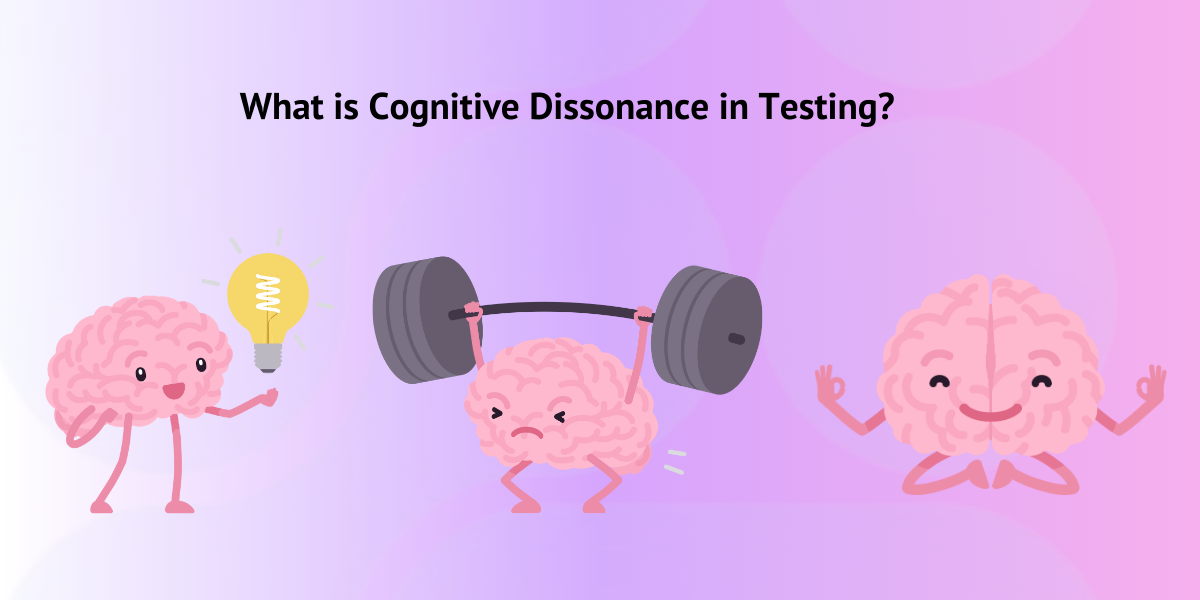
You’re running a test suite late at night. The logs are green, the automated script passed, and everything seems fine.
But a nagging doubt remains: “Did I really test enough?”
The next day, a bug sneaks into production, and you’re left wondering, “How did I miss that?”
This is what is called cognitive dissonance in software testing—where human psychology silently influences your decision-making.
Let’s understand how biases shape your work and how you can outsmart your brain to deliver exceptional results.
Note: Engenious University Certifications are launching soon at a special price like never before! Join the waitlist to receive special early bird offers.
The Basics: Understanding Cognitive Bias
What Is a Cognitive Bias?
A cognitive bias is a mental shortcut that helps us make quick decisions, but it often leads us to errors in judgment.
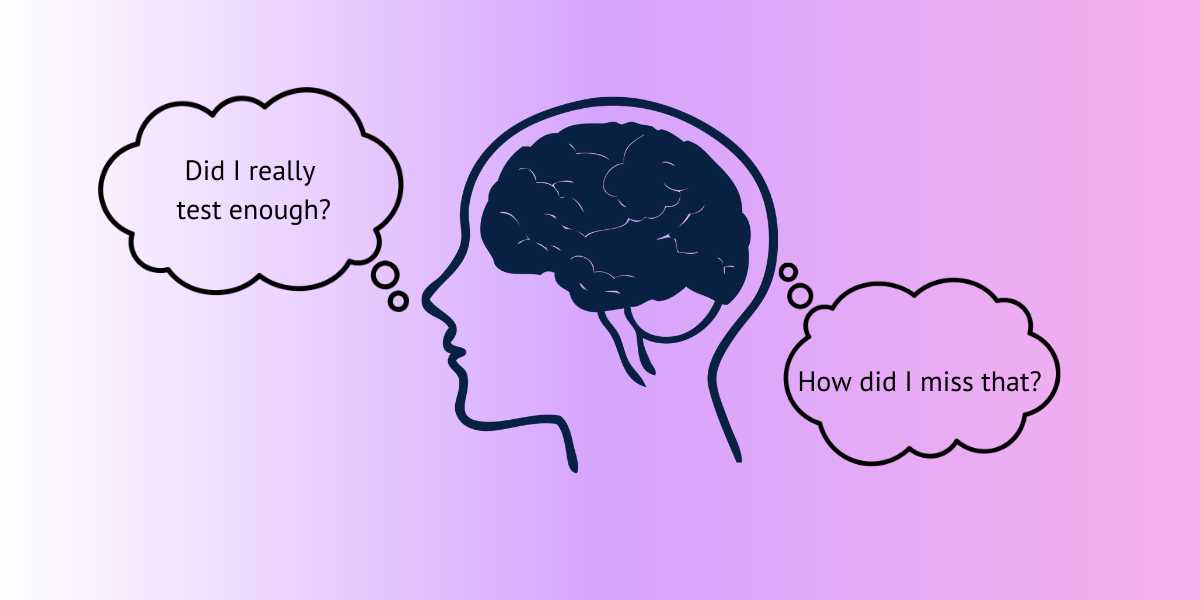
Our brains crave efficiency, but in the process, we sacrifice accuracy.
In testing, these biases can mean the difference between catching a critical defect and letting it slip into production.
Common Cognitive Biases in Testing
- Confirmation Bias: You look for evidence that supports your hypothesis (e.g., that a feature works), ignoring evidence that it doesn’t.
- Automation Bias: You blindly trust automated test results, even when something feels off.
- Anchoring Bias: You rely too heavily on initial information, like assuming a feature is bug-free because it passed early-stage tests.
- Overconfidence Bias: You overestimate your abilities or the thoroughness of your tests, leading to untested edge cases.
The Four Categories of Cognitive Bias
Psychologists often classify biases into these categories:
- Decision-Making Biases: Errors in judgment based on shortcuts (e.g., automation bias).
- Memory Biases: Relying on recent or vivid experiences rather than objective data (e.g., focusing on the last bug you found).
- Social Biases: Influenced by others’ beliefs or trends (e.g., trusting popular tools without assessing their fit).
- Cognitive Dissonance: The discomfort of holding conflicting beliefs (e.g., believing you’ve done enough testing but doubting it internally).
Testing requires vigilance against these mental traps. Recognizing them is the first step toward improvement.
Now, let’s understand the two systems of thinking in testing.
The Two Systems of Thinking: Fast vs. Slow Testing
What Are System 1 and System 2?
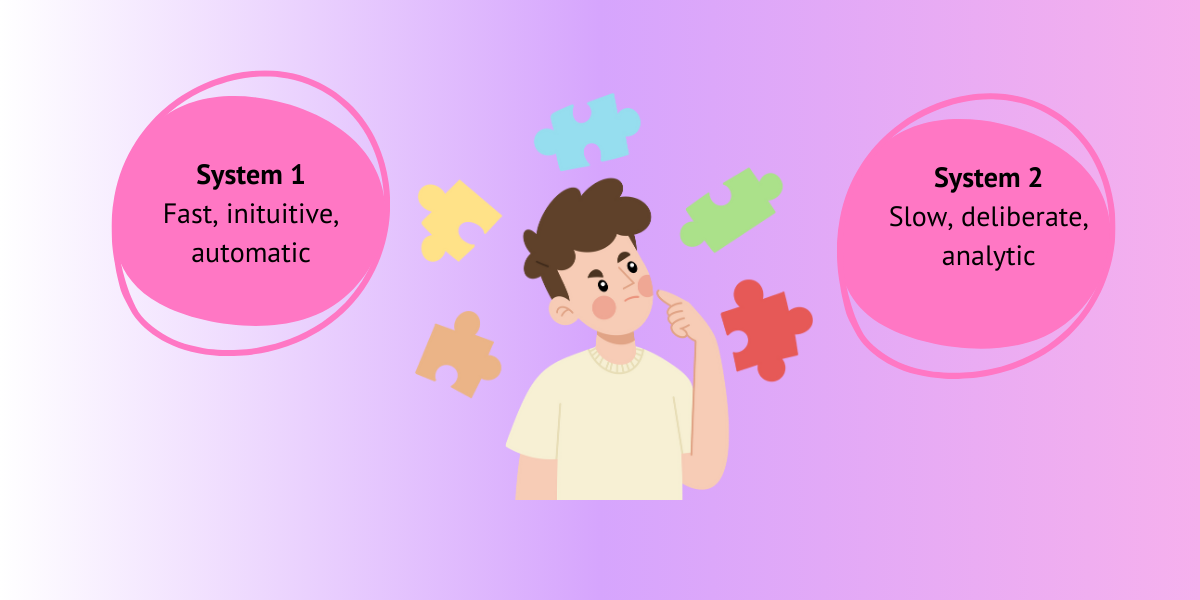
Daniel Kahneman’s Thinking, Fast and Slow explains how our brain has two modes:
- System 1: Fast, intuitive, and automatic. This is your gut instinct.
- System 2: Slow, deliberate, and analytical. This is your logical thinking.
Both systems play a role in testing—but understanding when to use each is critical.
System 1: The Gut Instinct in Testing
System 1 is your inner detective, spotting issues like a strange UI glitch or inconsistent behavior. It’s ideal for:
- Exploratory testing.
- Quickly triaging bugs.
- Spotting anomalies based on experience.
The Problem: System 1 can lead to snap judgments. You might assume a bug is unimportant or overlook its potential impact.
System 2: The Analytical Approach
System 2 helps you investigate deeply, ensuring no stone is left unturned. It’s best for:
- Root cause analysis.
- Creating comprehensive test strategies.
- Validating assumptions with evidence.
The Challenge: System 2 is slower, so over-relying on it can delay decisions or lead to analysis paralysis.
Pro Tip: Combine the two. Use System 1 to spot potential issues and System 2 to validate them rigorously.
Confirmation Bias & The Tester’s Dilemma
What Is Confirmation Bias?
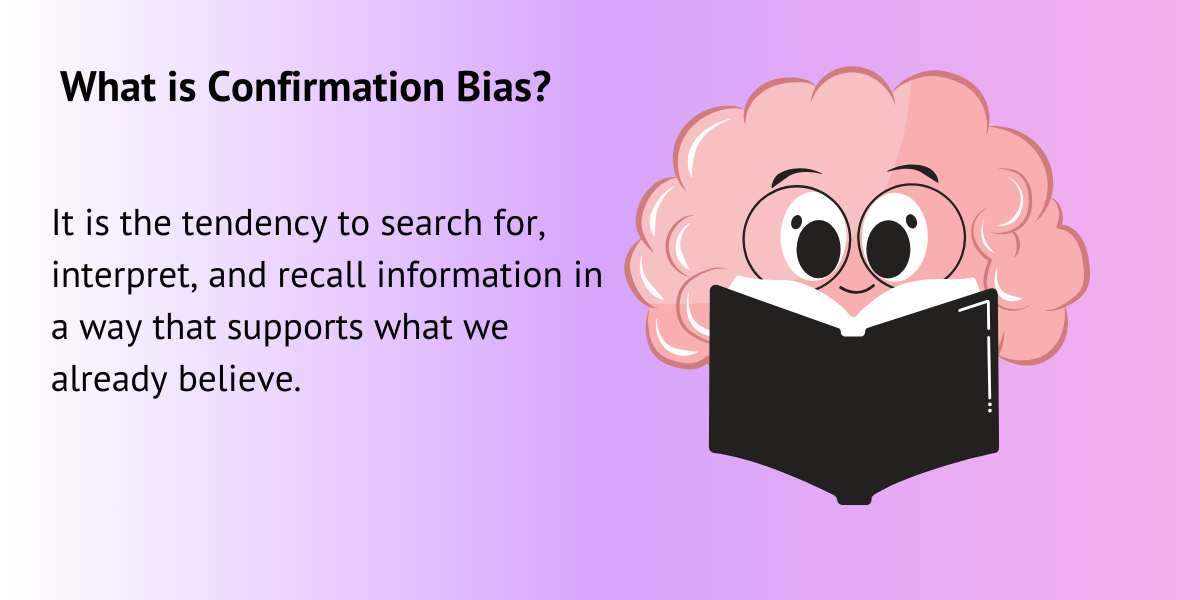
Confirmation bias leads you to favour information that supports your existing beliefs. For example:
- You believe a feature is bug-free because the developer said so.
- You test only the paths you think will work, avoiding scenarios where they might fail.
Confirmation Bias arises when your actions conflict with your beliefs. For example:
- You feel uneasy about shipping a release, but the deadline pressures you to approve it.
- You ignore warning signs in test results because investigating further conflicts with your belief that the system is stable.
How These Biases Affect Testing
Both biases create blind spots. You may:
- Overlook critical edge cases.
- Dismiss test failures as “flukes.”
- Avoid challenging assumptions, leading to missed bugs.
Actionable Solution: Start a Bias Journal
Keep a log of situations where you:
- Felt conflicted about a decision.
- Ignored evidence that later proved important.
- Made assumptions that impacted test outcomes.
Reflecting on these moments helps you identify patterns and reduce bias in the future.
Automation Bias: The Silent Saboteur in Testing
What Is Automation Bias?
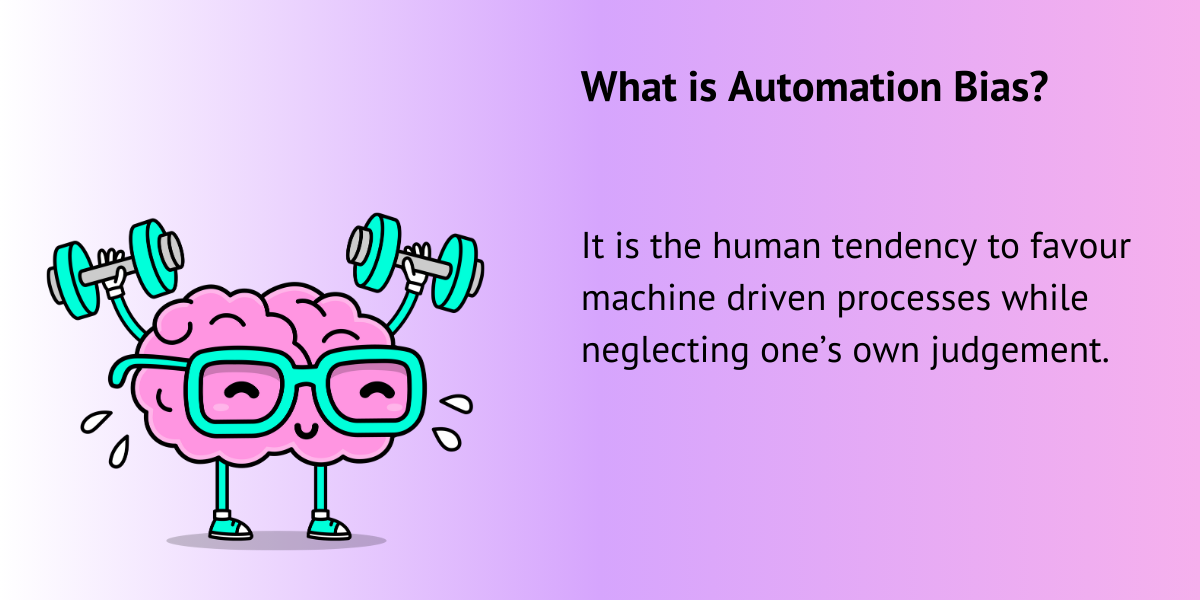
Automation bias occurs when testers rely too heavily on automated tools, assuming they catch everything. This is dangerous because:
- Automated tests are only as good as the scenarios you write.
- They can miss usability issues, visual glitches, or context-specific bugs.
Real-World Impact of Automation Bias
- Example 1: A tester trusts that all edge cases are covered by automated tests, only to find out later that a critical scenario wasn’t included.
- Example 2: Over-reliance on automation leads teams to neglect manual testing, missing bugs that only a human can spot.
How to Mitigate Automation Bias
- Combine Automation with Exploratory Testing: Use automation for repetitive tasks but supplement it with manual testing for edge cases.
- Regularly Review Test Coverage: Ensure automated tests are updated to reflect new features and potential risks.
- Question Automation Results: Treat green results as starting points, not final answers.
How to Deal With Biases: A Tester’s Toolkit
Accept the Truth: Objectivity Is a Myth
No one is free from bias. Instead of striving for perfect objectivity, focus on recognizing and managing your biases.
Steps to Reduce Bias in Yourself and Your Team
- Promote Psychological Safety: Encourage open discussions about assumptions without fear of judgment.
- Use Peer Reviews: A fresh perspective often reveals blind spots.
- Leverage Metrics: Let data guide your decisions rather than gut feelings.
Practical Tips for Testing Smarter
- Rotate Roles: Have developers review test cases and testers analyze features. This cross-pollination of perspectives reduces bias.
- Create Decision Checklists: Before approving a release, verify that decisions are backed by data and have considered all possible outcomes.
- Review Past Mistakes: Use retrospectives to identify biases that influenced missed bugs or incorrect assumptions.
Why Understanding Bias Changes Everything
Testing is more than a technical skill—it’s an intellectual challenge. When you understand cognitive biases, you can:
- Identify blind spots in your testing process.
- Make smarter, data-driven decisions.
- Deliver higher-quality products with fewer defects.
Your Next Steps
- Reflect: What biases have influenced your decisions recently?
- Act: Start your bias journal and share it with your team to foster collaboration.
- Learn: Dive deeper into cognitive psychology to sharpen your critical thinking skills.
Testing is as much about mastering your mind as it is about mastering tools. When you conquer your biases, you unlock the power to test with clarity, confidence, and precision.
Ready to Take Your Testing to the Next Level?
If you found this article helpful, you’ll love the resources we share regularly with our subscribers.
Our upcoming new program offers in-depth resources into topics like these, with actionable tools and strategies designed to make you a smarter, more effective tester.
Why not take the next step in your testing journey?
🔗 Our boot camps used to cost $3000, but now we are to launch more advanced courses at just $49.99/month for our engenious family.
P.S. If you’re serious about improving your testing skills and landing our dream tech jobs, subscribing to our platform.
Don’t miss out on expert-driven content that will push you to think deeper, test smarter, and stay ahead. Sign up here.
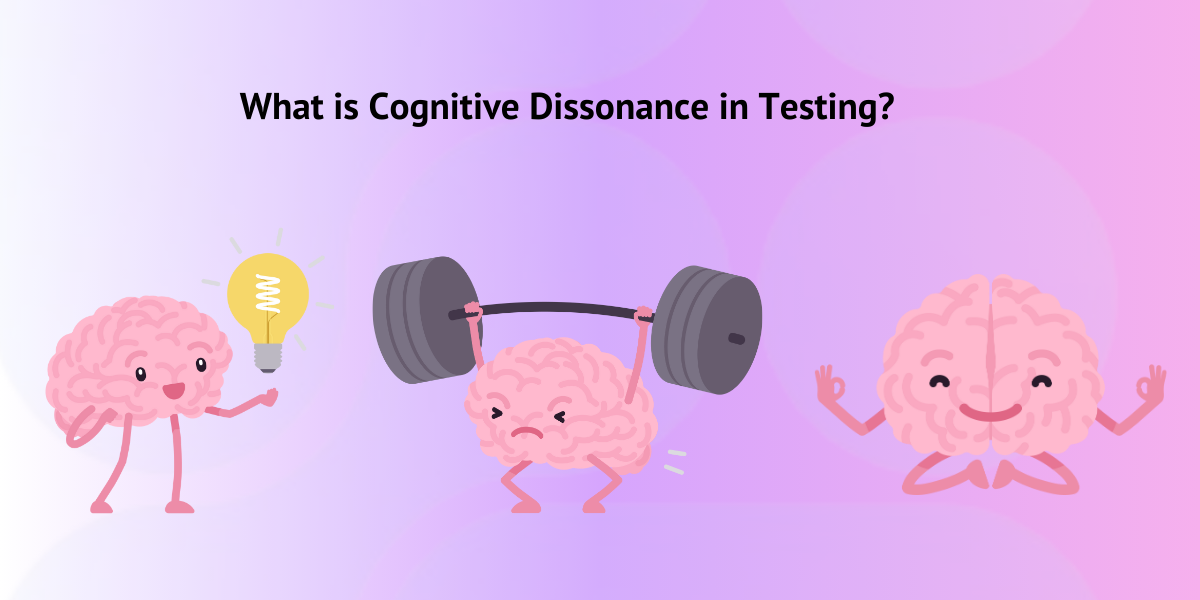
Just another WordPress site